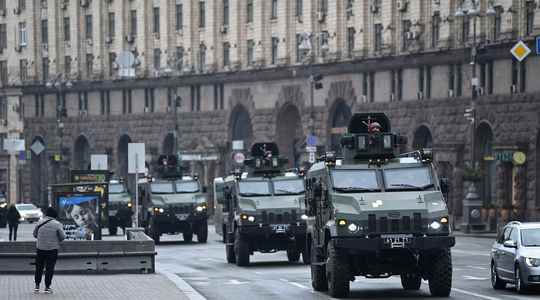Faced with Russia’s invasion of Ukraine, the West is looking for the right response. The economic sanctions are starting to rain down. Can a military response be possible, under the aegis of NATO? The Polish government announced on Thursday that it had asked Thursday to activate Article 4 of the Alliance Treaty, which provides for consultations in the event of a threat to the security of one of the parties. Several countries of the former USSR, neighbors of Ukraine, have abounded: Bulgaria, the Czech Republic, Estonia, Latvia, Lithuania, Romania as well as Slovakia, informed NATO on its website.
By definition, “Article 4 of NATO’s founding treaty provides that member countries may bring a matter to the attention of the North Atlantic Council (the Council – NATO’s highest political decision-making body). NATO) and discuss it with the Allies. This article states the following: The parties shall consult each other whenever, in the opinion of either party, the territorial integrity, political independence or security of one of the parties will be threatened”, delivers the Alliance. This movement has already provoked an emergency meeting of thirty NATO ambassadors on Thursday. A videoconference summit is also scheduled for Friday. For what consequences?
A “defensive” mission
If the request came first from Ukraine’s neighbours, it is because this country is not a member of the North Atlantic Treaty. Despite everything, and this from the invocation of this article 4, the question is examined by the member countries of NATO and can lead to “joint action”, indicates the organization. But not necessarily, therefore, in Ukraine. “NATO has no troops in Ukraine and has no plan and no intention of deploying troops in this country”, confirmed its Secretary General, Jens Stoltenberg, while announcing that the Alliance had activated “its plans of defence” to deploy additional forces, but rather in the allied countries of its eastern flank.
This NATO reaction force mentioned by Jens Stoltenberg has 40,000 soldiers and is equipped with a very high level of readiness joint operational force (VJTF) made up of 8,000 soldiers, including 7,000 French, with an air component currently placed under French command. NATO warns, however: “This deployment is intended to prevent an attack. NATO’s mission is defensive and we warn that any attack on one ally will be considered an attack on all.”
An article activated seven times since 1949
Regarding Article 4 of NATO, it has been invoked seven times since the creation of the Alliance in 1949. By Poland, already, on March 3, 2014, still in the context of this Ukrainian conflict. Over the past ten years, however, the majority of requests have come from Turkey. “On July 26, 2015, Turkey had made the same request because of the seriousness of the situation after the terrorist attacks of which it had been the target and to inform the Allies of the measures it was going to take”, quotes NATO in particular. .
“Twice in 2012 Turkey requested that the North Atlantic Council meet under Article 4: the first time on June 22, when one of its fighter jets was shot down by Syrian Air Defense Forces, and the second time on October 3, when five Turkish civilians were killed by Syrian shells.” This last call resulted in the deployment of Patriot missiles by the Alliance.
